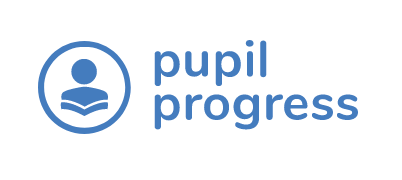Step 2: Taking The Pressure Out Of Recommending Student Grades

Many teachers will respond to the challenge of suggesting a grade for the centre to submit differently; some will relish the opportunity to prove that teachers know their students, others may feel a lack of confidence, guilt or anxiety around recommending grades for their students.
You may be working with NQT’s or people who have never taught an exam class before and therefore may need some reassurance that they are giving accurate grades. Some staff may have had bad experience of being way out on their predictions compared to actual summer results in previous years. You may be working in a context with high turnover of staff and so have only taught the students for a short while or have had a lot of supply teaching. There may be conflict over the process of validating the grades and ranks that teachers and subject leaders suggest.
Ensuring there is a clear, systematic approach to making Teacher Judgements across for each subject will support consistency and give confidence to all involved. Basing the recommended student grades on accurate current data will provide more objectivity and a fairer process.
In this blog I will be referring to what I have done to support teachers with the whole process using our assessment tracking platform Pupil Progress, which we have opened up for free use until August 31st 2020. If you feel confident in your internal spreadsheets or systems, we hope the advice we give here will still be applicable or at least help in some way.
What Is Expected?
Ofqual and the Exam boards are expecting a grade to be submitted based on what the teacher, subject lead and head of centre thinks they would have achieved had the summer exams gone ahead as normal. If you do not have your current data on your tracker, then I would advise that you first read our blog on “Step1: Where were your students at on the 20th March?”.
Many teachers and subject leaders may just want to get on with it. After all, you have to give predictions every term at assessment points, so it’s can’t be that difficult; “I know they were at a mid-grade 4, so they would probably get a grade 5”. But as the stakes are so much higher, and because the recommended grades will be validated by the centre before being standardised by the exam boards, it is much more important to make sure the grades are realistic, fair and reflective of actual performance and prior attainment. Showing how you have come to this grade recommendation will be vital for any internal verification conversations.
Our trackers are flexible enough to be used with any methodology that you want to use. The important thing we have done is provide a really robust way of accurately identifying the grade a student is currently working at based on your most reliable data and evidence. We are also recommending an approach that allows teachers to make a grade recommendation that can:
- Provide transparency around how a recommended grade has been reached
- Reduce unconscious bias in recommending grades and ranks
- Support the verification process by a subject and centre leader
- Provide consistency across a subject area and centre
- Give confidence in a rigorous, systematic approach to ensure consistency and most importantly fairness
The trackers on Pupil Progress pre-built, and match the exam-board specification requirements exactly, making this whole process straight-forward for all teachers. We will also provide any support you and your team need along the way. Our recommended steps for suggesting a Teacher Judgement Grade (to later be validated at a centre level) are:
- Use the Archive tool to take a snapshot of where they are currently at (March Working at Grade)
- Add the raw marks for each unit and unit section, reflecting the extra marks the student would be likely to achieve – the overall grade is calculated for you from the overall total course mark
- Validate this using the Teacher Judgement Column
Using an approach where you look at the marks for each unit is definitely more precise and rigorous as it takes into account the different skill and content/ topic areas that are assessed in that unit. It will also help with the rankings as the Overall Total Mark can be used to support ranking decisions.
Predicting Marks, Not Grades
Adding marks at a unit level will reduce the amount of subjectivity, as it encourages a teacher to focus on a student’s performance within each unit. It will help the teacher to think of the varying skills and or knowledge application by a student required in different parts of the course. This is especially important in courses where there is a practical unit and a written exam, helping to distinguish where you think they will achieve more or less marks given the students ability levels.
It will be very hard to objectively balance the different skill requirements while matching the unit weightings; for example what if a student is brilliant at the practical, but struggles with the exam components? How can you check you have balanced these correctly accordingly to the unit weightings?
For example, in AQA Drama, using the 2019 grade boundaries a teacher may have the following data as a calculation from the tracker, and then add marks to each unit to give an updated Working At Grade to reflect expected progress by the summer exam:

If you look at the first student, Tracy, you can see that she is currently on a grade 3 for her Working At Grade. The teacher can take a snapshot of the tracker with this as a starting point, then add marks to the units. From the tracker it is clear that unit 2 has not been fully assessed yet. The teacher and subject leader will know how recently the other data was added and if it was likely to increase between March and the summer exams.
Here are the increased marks that the teacher has added based on the best available evidence they have:

The improvement marks can be added to the tracker per unit and even by criteria or marking strand. You can see the effect on the unit grade and the Overall Total Marks – any guesswork is dramatically reduced as it is linked directly to the criteria and what you know about the student in that unit. By working through the marks you can be confident that this student will be a grade 5. The Target Grid will even show you they are 13 marks off a grade 6. This table summarises the differences seen in the tracker for the first student, Tracy:

This also makes it easier for both the teacher and line manager to be confident in recommending a grade 5 as it is so transparent about where each assessment mark has come from and why the student has seemingly jumped 2 grades since the most recent data (March 20th Working at Grade calculation).
If you think that it is too late or difficult to add marks to each criteria, then you can also use our Personalised Assessment tool to add a mark for the whole unit. It will still be more precise and focused than just looking at the current overall grade and bumping it up a grade because it feels right.
Reducing Bias
By adding marks at a unit level, it will decrease the amount of bias introduced. It focuses the mind on a judgement based on the evidence related to that unit. It is linked to a students skill and aptitude in a specific area of the subject, helping to reduce any unconscious bias that may be introduced as it is not a decision based on student behaviours.
This process will also keep the increase in marks to a reasonable level; going up two grades doesn’t sound like a big leap, but when you have to find where they are going to increase their marks by 30 to achieve this, it can really temper your decision.
Taking Pressure Out Of Making Judgements
By evidencing where you believe the extra marks would have been achieved by a student it gives the teacher a focus and justification for why they believe a specific grade is reasonable for a recommended grade. It focuses on what the student is capable of, not what grade the teacher ‘feels’ the student should achieve overall.
Seeing how you have come to this decision and not just basing it on a “trust me, I know they would have achieved a 7 ” gives confidence to both the teacher and any line managers that will validate the recommended grades so they can then be used as the grade submitted by the centre. If there are students that you feel need to be adjusted, then you can see which are only a mark or two away from the next boundary using the Target Grids and revisit the unit breakdowns with more scrutiny.
By following this process you will have fair Overall Total Marks for each student, which will make ranking students with the same grade a lot easier, fairer and based on more objective evidence. Any ranking discussions will be far better informed and less reliant on the teacher to be outspoken and an advocate for their students.

Barnaby Grimble
Co-founder
Chief Product Officer

Comments